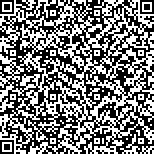下载中心
优秀审稿专家
优秀论文
相关链接
摘要

Fourier-Mellin不变性对称相位匹配滤波器,即symmetric phase-only matched flitering of fourier-mellin invariant(SPOMF-FMI)能解决影像配准的平移、旋转和放缩几何变换问题;然而,该方法在实际应用中具有局限性,包括图像几何尺度和图像非线性几何畸变处理能力.为了克服上述缺陷,提出了一种附带星载参数的星载合成孔径雷达(synthetic aperture radar,SAR)影像自动配准算法.该方法采用由粗到精匹配策略,由距离-多普勒影像粗匹配和改进SPOMF-FMI影像精匹配组成.使用Radarsat-1和ENVISAT ASAR影像做实验,结果表明本方法在处理重复轨道或相同升、降轨星载SAR影像(即确保相似影像纹理测度)配准问题时,能达到子像素级的配准精度.
SyntheticAperture Radar(SAR) sensors have mi portant properties on the operational leve,l since they are capable of acquiring data in allweather conditions, and are not affected by cloud cover or different sunlight conditions.Their advantages have aided the developmentofSAR techniques. In recent years, SAR systems have acquired data that are used forvarious tasks, such as mi agery fusion, temporal change detection and SAR interferometry(InSAR). The basis of all these tasks is accurate miagery registration, though the registration accuracymay vary from one task to the other. In addition, the use of an automatic registration procedure is mi portantdue to the increasing volumes ofSAR data and their use in awide range of applications. Referring to the problem of automatic SAR miagery registration, researchers of SAR community have developed and applied various mi agery-intensity-based and feature-based algorithms. However, their methods have deficiencies.This paper addresses the problem of automatic registration of spaceborne SAR mi ages. The spectral phase of an miagery given by the Fourier transform is an mi portant source of information since it preserves the location of objects;then, registration techniques based on spectralphase information are a suitable solution to overcome the lmi itations of the general area-based or feature-based automatic registrationmethods. The application of the SymmetricPhaseOnlyMatching Filtering to Fourier-Mellin Invariant (SPOMF-FMI) descriptors, one of the spectral information based registration methodologies, allows a registration of translated, rotated and scaled mi agery. However, this approach has some lmi itations, such as mi agery size restrictions and weak capability of processing non-linear geometric distortions. In this paper, an enhanced automatic registration method and its utility on the registration of spaceborne SAR mi agery are investigated. The approach consists of two main steps: coarse registration using a Range-Doppler equation whose parameters come from ephemeris; and fine registration using the enhanced SPOMF-FMI algorithm. The significant advantage of the enhanced SPOMF-FMI is its capability to process non-linear geometric distortions and its relaxed restrictions on mi agery size due to mi agery sectioning and Kriging interpolation. As a rule, the general SPOMF-FMI algorithm is based on a rigid body transformation used as the globalmapping function for the geometric transformation of the sensed mi agery.A smi ple rigid body transformation can not achieve accurate registration of mi ages with non-linear geometric distortionswhich are introduced by sensor non-linearity and other random factors.With the help of mi agery sectioning and Kriging interpolation, this problem can be resolved. Imagery size restriction is another defection of the generalSPOMF-FMI procedure; however,it can also be solved by mi agery sectioning and Kriging interpolation. The mi plementations of ourmethod for Radarsat-1 mi ages, ENVISAT-1 ASAR mi ages are validated by the expermi ents of automatic mi agery registration. The results demonstrate that the new approach can achieve sub-pixel registration when dealingwith the same sensorSAR mi ages thathave the same orbitnumberwithin a repeating cycle or the same orbitpass which guarantees smi ilar mi agery textures.

